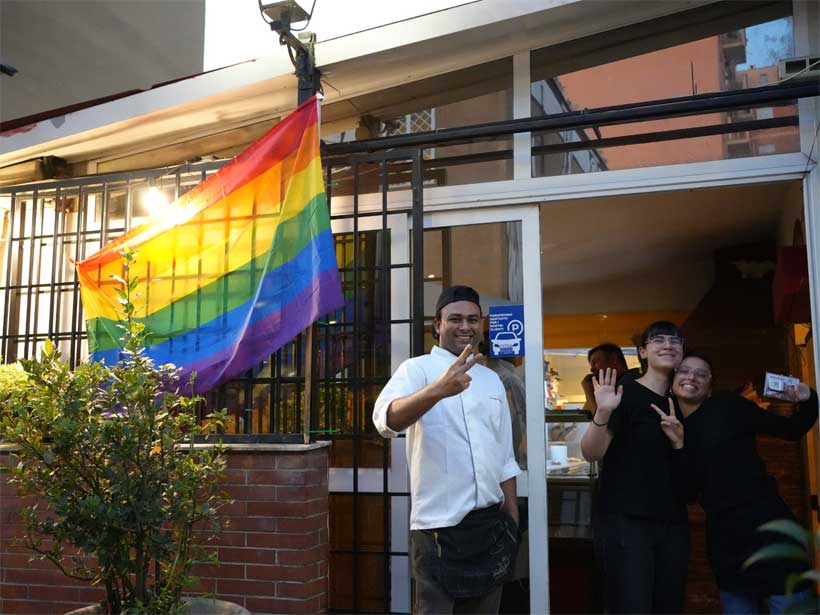Under the Shadow of the Jubilee and the Right-Wing Government in Italy
Italy finds itself at a crucial moment in its political history. For the first time in recent history, the country is governed by a conservative right-wing party that won the elections with an agenda strongly focused on the concept of nation, border defense, and immigration control. This position clashes openly with efforts for integration and hospitality promoted by other political and social forces, in an international context marked by migration crises and global tensions.
The Geopolitical Context and the Italian Challenge
The international geopolitical context sees Italy facing growing migration pressure and a demand for greater inclusivity from the European Union. The issue of the Jubilee fits into this dynamic: as Rome prepares to welcome millions of pilgrims, the event will be a showcase for Italy and its integration policies.
Tor Pignattara, Italy: A Melting Pot of Cultures and Religions
The neighborhood of Tor Pignattara in Rome represents a symbolic case of the social and cultural challenges that Italy faces. This neighborhood, often described as a ‘melting pot,’ is home to a wide variety of ethnicities, including Italians, Bengali, Chinese, Filipino communities, and migrants from Africa. Here, the concept of nation is tested daily, as social, cultural, and economic dynamics intertwine in complex ways.
Tor Pignattara is also famous for being a neighborhood rich in artists and culture, characterized by the numerous murals that decorate its streets. These murals have become a symbol of diversity and cultural integration, enriching the urban landscape and showing how art can foster dialogue between different communities. The neighborhood is a living testimony of how different cultures and traditions can coexist and enrich each other.
Gastronomy as a Metaphor for Integration
In Tor Pignattara, diversity is not only visible in religions and art but also in cuisine. The neighborhood’s culinary culture reflects the coexistence of various communities, each with its own culinary traditions. Ethnic restaurants stand alongside trattorias offering traditional Roman dishes, creating a fascinating balance between novelty and historic roots. A significant example of this balance is the Osteria degli Stolti, a restaurant that manages to combine respect for traditional Roman cuisine with the experimentation of fusion and international dishes.
Religious Diversity in Tor Pignattara
In a neighborhood like Tor Pignattara, different faiths not only coexist but also offer spaces for dialogue and mutual understanding. Religious celebrations, which take place within the communities, help make the cultures and traditions of each faith visible and recognizable, facilitating the interaction and integration between different ethnic groups.
Among the most widespread religions in the neighborhood are Christianity, Islam, and Hinduism. Some of the main places of worship include:
– Church of San Barnaba: One of the main landmarks for Christians in the neighborhood, this church is a gathering place for the Catholic faithful of Tor Pignattara and nearby areas.
– Centocelle Mosque: Located near Tor Pignattara, this mosque serves the large Muslim community in the area, becoming a place for dialogue and integration.
– Hindu temple on Via dell’Acqua Bullicante: An important point of reference for the Bengali community in the neighborhood, who practice Hinduism. It is a social as well as a religious gathering center.
The Jubilee and Religion as a Tool for Integration
The Jubilee, an event closely linked to Catholic tradition, offers an opportunity to reflect on how Rome can be a model of religious and cultural integration. The welcome of pilgrims from all over the world can become a metaphor for the city’s ability to welcome and integrate communities of all beliefs.
A Replicable Model of Social Sustainability
Tor Pignattara can be considered a model of sustainable integration. The coexistence of different communities, religious and cultural cooperation, and the role of local institutions are all elements that contribute to creating a cohesive social fabric. This model could be replicated on a larger scale, promoting policies of inclusion and interfaith dialogue at the national level.
Investing in social infrastructure, such as community centers and places of worship, could be the first step towards building cohesive communities in other parts of the country. The success of Tor Pignattara lies in the ability of its communities to coexist and support each other, creating a network of dialogue and integration that could serve as a model for all of Italy.
